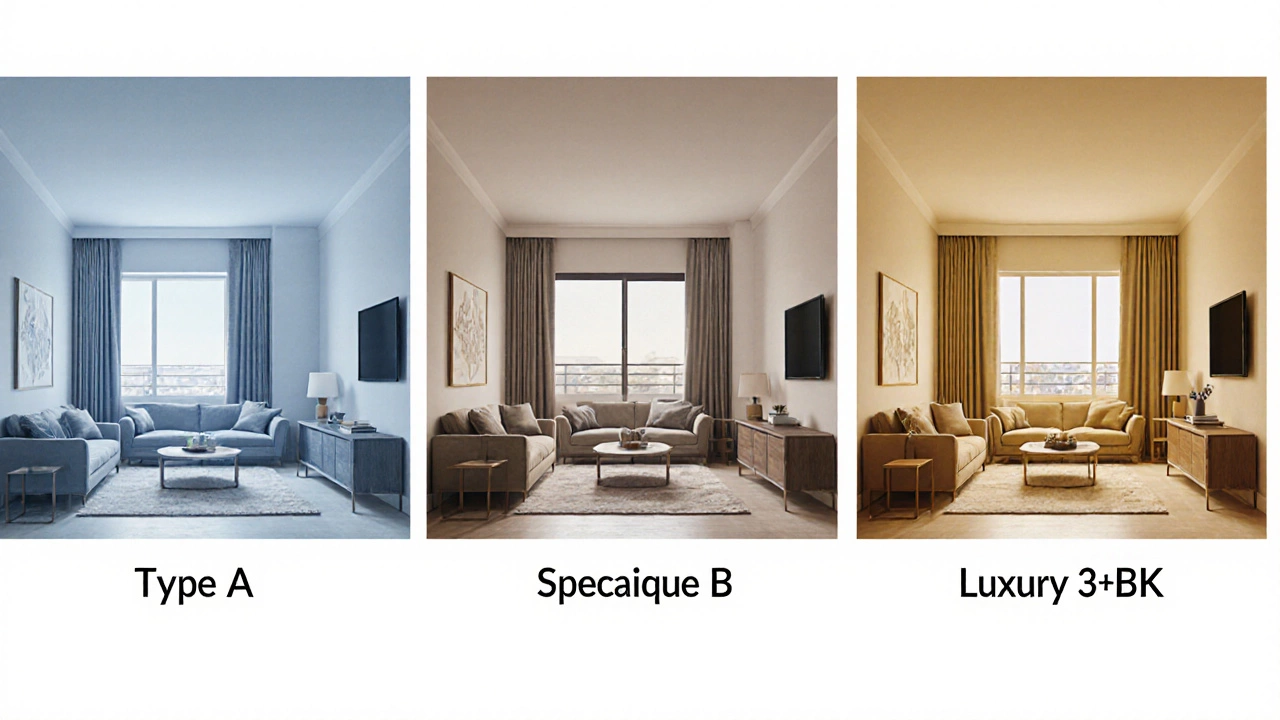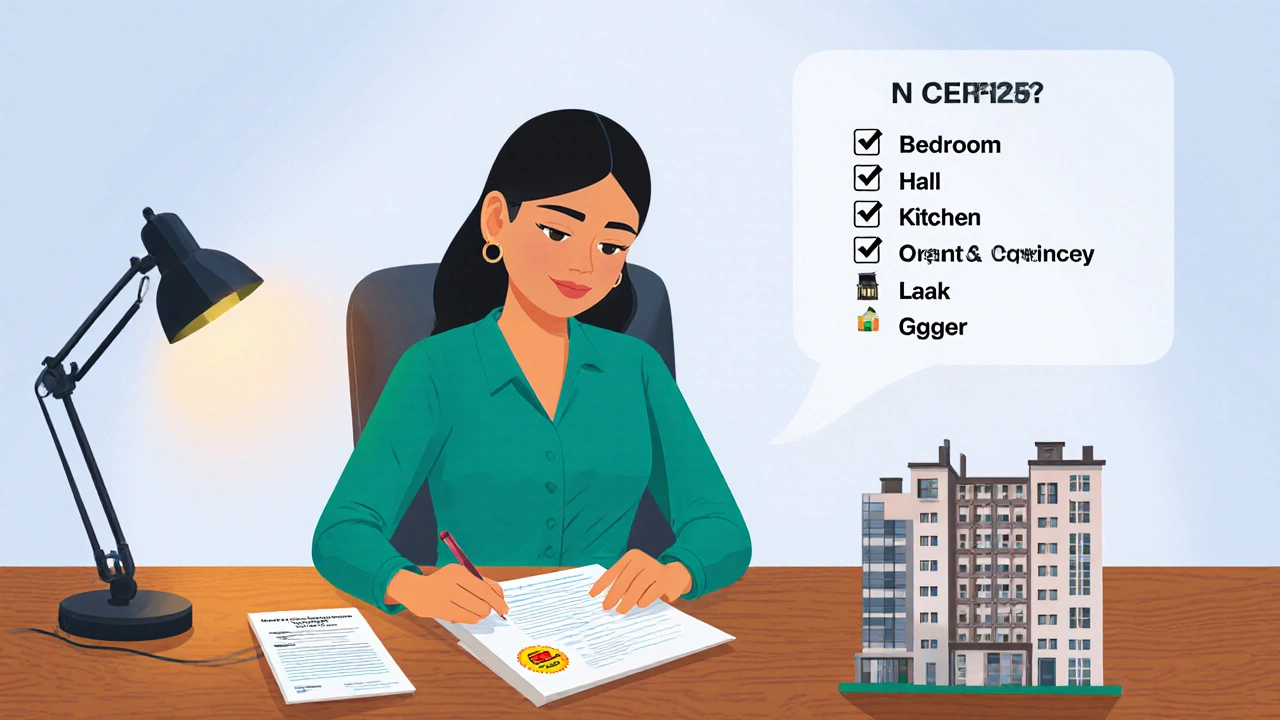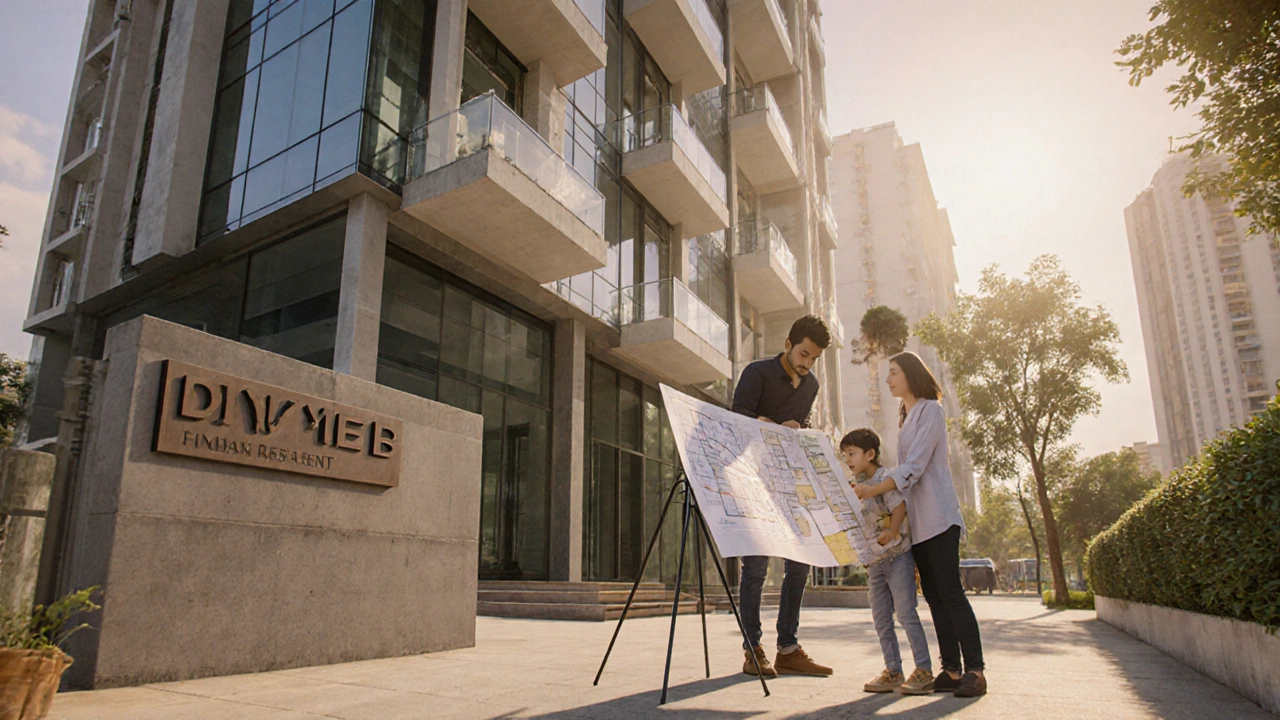Type B Property Mortgage & Tax Calculator
Calculate Your Property Costs
Enter your Type B property details to estimate mortgage eligibility and annual property tax based on RERA standards
Estimated Results
Loan-to-Value
Property Tax Rate
Carpet Area
Quick Summary
- A Type B property is a government‑defined housing class used mainly in India.
- It usually covers 2‑3 bedroom units with carpet area between 80 m² and 115 m².
- RERA obliges builders to disclose the exact type in every sale agreement.
- Financing, tax and resale value differ from Type A and Type C units.
- Use our checklist before signing any contract.
What Is a Type B Property?
If you’re scrolling through listings and wonder what type B property means, you’re not alone. In plain English, a type B property is a classification used by Indian real‑estate regulators to describe a mid‑size residential unit that meets specific carpet‑area and layout criteria. The label appears on every RERA‑approved brochure, on the sale deed and often on the builder’s website.
The classification was introduced to bring more transparency to the market. Before RERA, developers could call a 70 m² flat a “luxury” unit, confusing buyers and inflating prices. By assigning a letter‑grade-A, B, C-regulators give you a quick reference for size, amenities and legal compliance.
Key Features of a Type B Property
Understanding the exact numbers helps you compare apples to apples. Here are the typical benchmarks for a Type B unit, though local rules may vary by state:
- Carpet Area: 80 - 115 m² (860 - 1,240 sq ft). This is the usable floor space inside the walls, not counting balconies or common corridors.
- Bedroom Count: Usually 2 BHK or 3 BHK layouts. A “2BHK” means two bedrooms, a hall and a kitchen.
- Floor Area Ratio (FAR): A FAR of 1.5 - 2.0 is common for Type B projects, meaning the total built‑up area can be 1.5‑2 times the plot size.
- Common Area Ratio: Approximately 20 %-30 % of the total built‑up area is shared (lifts, lobby, gym).
- Legal Definition: Under RERA (Real Estate (Regulation and Development) Act, 2016), the promoter must disclose the exact type in every advertisement.
These numbers matter when you calculate mortgage eligibility, property tax, and future resale value.

How Type B Differs From Other Types
| Feature | Type A | Type B | Type C |
|---|---|---|---|
| Typical Carpet Area | 60 - 79 m² | 80 - 115 m² | >115 m² |
| Common Use | Compact 1‑BHK units for first‑time buyers | 2‑3 BHK families, middle‑income segment | Luxury villas, premium apartments |
| Typical Price Range (per sq ft) | ₹3,500 - ₹5,000 | ₹5,000 - ₹7,500 | ₹8,000 + |
| Mortgage Eligibility (LTV) | 80 % | 75 % | 70 % |
| Property Tax Rate | 0.5 % of assessed value | 0.6 % of assessed value | 0.8 % of assessed value |
The table shows why a Type B unit often hits the sweet spot: spacious enough for a small family, yet not as pricey as luxury Type C apartments.
Why Buyers Care About the Type B Label
Here are the real‑world reasons the classification matters beyond just a letter on a brochure:
- Financing clarity: Banks use the carpet area to calculate loan‑to‑value (LTV). A 2 BHK with 100 m² can comfortably qualify for a 75 % LTV, while a smaller Type A might be capped at 80 % but with a lower loan amount overall.
- Tax implications: Property tax is levied on the assessed built‑up area. Since Type B units have a moderate common‑area ratio, your annual tax bill stays predictable.
- Resale confidence: Future buyers can instantly gauge the size class, reducing negotiation friction.
- Regulatory safety: RERA compliance means the promoter cannot arbitrarily change the unit’s size after you sign the agreement.
In short, the label protects your wallet, your loan, and your peace of mind.
Common Pitfalls and How to Avoid Them
Even with a clear classification, buyers still stumble into traps. Spot the red flags before you sign:
- Mis‑reported carpet area: Some builders quote the “built‑up” area as carpet. Verify the carpet area in the sale deed.
- Hidden common‑area charges: The maintenance fee often includes a share of the common pool. Ask for a breakdown of what’s covered - lifts, security, landscaping.
- Non‑RERA projects: If the project isn’t registered on the RERA portal, you lose statutory protection. Check the project ID on the official website.
- Incorrect FAR usage: Some developers exceed the permissible Floor Area Ratio, risking legal penalties that could affect your ownership.
- Ambiguous layout: The term “2BHK” can hide a tiny master bedroom and a large hallway. Request a detailed floor plan with exact dimensions.
Keep a notebook, ask the builder to walk you through each item, and never rely solely on sales pitches.

Real‑World Example: A 2BHK Apartment Classified as Type B
Meet Ananya, a first‑time buyer in Hyderabad. She found a 2 BHK listed as a Type B property in a gated community. Here’s what she discovered step‑by‑step:
- Carpet area: 98 m² - confirmed on the RERA portal using project ID 2025‑HB‑TR‑012.
- Floor plan: Two equal‑size bedrooms (12 m² each), a hall of 20 m², kitchen of 10 m², and a balcony of 5 m².
- Common‑area contribution: 25 % of the total built‑up area, which translated into a monthly maintenance fee of ₹2,500.
- Mortgage: Her bank approved a 75 % LTV, giving her a loan of ₹45 lakhs on a purchase price of ₹60 lakhs.
- Property tax: Assessed at 0.6 % of the market value, costing her ₹36,000 per year.
Because everything matched the Type B definition, Ananya felt confident walking away with the keys. She later sold the unit for a 5 % appreciation, and the new buyer also appreciated the clear classification.
Checklist Before You Sign the Agreement
- Locate the RERA registration number and verify the property type on the official portal.
- Ask the builder for a certified carpet‑area certificate; cross‑check it with the floor plan.
- Calculate the expected loan amount using your bank’s LTV limits for Type B units.
- Request a detailed breakdown of common‑area charges and future maintenance plans.
- Confirm the FAR allowed for the project; ask for local authority approval copies.
- Review the property‑tax assessment based on the declared carpet area.
- Read the cancellation and handover clauses; ensure they reference the exact Type B specifications.
Crossing off each item gives you a solid safety net and keeps surprises at bay.
Frequently Asked Questions
What does ‘type B’ actually stand for?
It is a regulatory label that defines a mid‑size residential unit, typically 80‑115 m² carpet area, suitable for 2‑3 bedroom families.
Can a builder change a Type B unit to Type A after I buy?
No. Once the project is registered on RERA with a specific type, the builder must deliver that exact size. Any deviation can attract penalties and legal action.
How does the Type B label affect my loan?
Banks use carpet area and price per square foot to set the loan‑to‑value ratio. Type B units usually qualify for 70 %‑75 % LTV, slightly lower than Type A but with a larger loan amount overall.
Is the property tax higher for Type B?
Tax rates are set by the local municipal body, but because Type B units have a moderate built‑up area, the annual tax typically falls between 0.5 % and 0.7 % of the assessed value.
Will a Type B property retain its value better than a Type C?
Generally, yes. Type B hits the mass‑market sweet spot, so demand stays steady. Type C luxury units can be more volatile, especially if the premium amenities don’t match buyer expectations.

